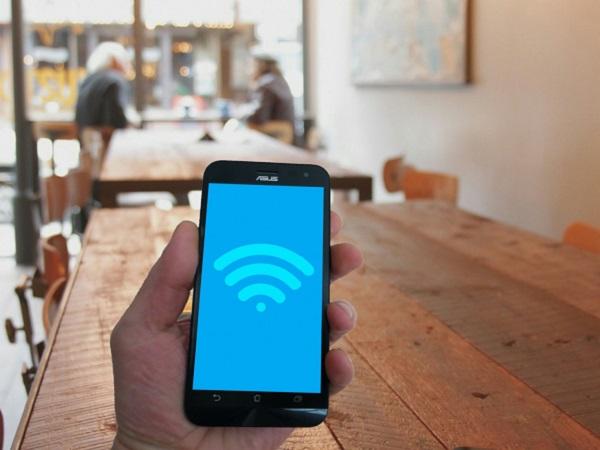Viewing Wi-Fi Channels: Reach Maximum Speed

Wireless network interferences could be the reason for the sluggish network speeds or falling Wi-Fi signals.
Almost everyone that uses Wi-Fi experiences wireless connectivity issues one way or another. Wi-Fi has become a necessity in every household and at work-places in today’s world. Wi-Fi facilitates remote working, research, and entertainment.
Wi-Fi channels can be described as smaller bands inside Wi-Fi frequency bands, which your wireless network can utilize to dispatch and get data. The number of Wi-Fi channels you have is hugely reliant on the frequency band of your router. Most people often turn to Wi-Fi extenders plus mesh networks to relieve their connectivity problems.
Wi-Fi is used in homes to stream online entertainment. However, sluggish and poorly connected Wi-Fi can be very disturbing. While installing VPNs to your smart TV can be a clever move to staying safe while browsing online, you must ensure that the VPN is compatible with your smart TV. A Samsung TV needs a compatible VPN to ensure guaranteed and properly performing VPN for security. A wide variety of them exists in the market.
Steps to reaching maximum Wi-Fi speed
Incredible Wi-Fi speeds and connectivity are vital for effective performance and ultimate entertainment at home. Below are things you can do to increase your internet speed and connectivity.
1. Turn things on and off repeatedly
Restarting your modem, router, or gateway is often the first response to a sluggish Wi-Fi connection. Turning on and off enables the modem to clear off any congestion in the virtual memory. That is the first way of troubleshooting.
Restarting enables a modem or router to gain a fresh start to perform tasks slowing its speed. Turn your Wi-Fi back on once you are through restarting, and allow your devices to reconnect before you can access the internet speed to identify changes.
2. Shift locations of your router
The location of your Wi-Fi devices contributes to internet speed. Internet signals can be blocked by walls, rooms, furniture, ceilings, and more. Also, the radio signals from other devices can interrupt the movement of Wi-Fi signals.
Shifting locations, for instance, by going closer to the internet source or bringing the internet source to where you are, will solve the connectivity and internet speed issues.
3. Shift your Wi-Fi frequency band
The two common Wi-Fi frequency bands are 2.4 GHz and 5 GHz, which modern routers utilize. Frequency band type influences your speeds and connection quality at varying distances from the router. If you are experiencing challenges in one band, you can always try shifting to the other to solve the Wi-Fi connectivity or speed challenges.
4. Adjust your routers’ antennas
Most routers plus wireless entryways have interior antennae’s, making it impossible to adjust. However, if your routers have external routers, you can attempt reconfiguring. Router antennas are omnidirectional, implying they transmit signals in every direction but perpendicular to antennas.
5. Upgrade to a faster internet
Internet speeds are often categorized from slowest to fastest and are subscription-based. The lower the subscription, the slower the internet and vice versa. Hence, if you find your internet speed to be too slow for your internet use, you may want to consider upgrading to faster internet.
6. Extend Wi-Fi network
You may have found a perfect locale for your router but are still experiencing speed coupled with connectivity issues at particular points in your home. The solution would be adding a gadget that can extend your Wi-Fi network range. Such devices include Wi-Fi boosters, power line extenders, mesh Wi-Fi systems, and wired access plugs.
7. Remove unnecessary connections
All connections to your network should be essential, as unessential connections can cause the internet to slow down. The fastest way to drop all unnecessary connections from your bandwidth would be to change Wi-Fi passwords and reboot your router. Use the new password to log back into the essential devices only.
8. Change your Wi-Fi frequency channel
Wi-Fi’s bands of 2.4 GHz and 5 GHz are split into channels, 11 and 45, respectively. Routers select channels automatically, but other times you may want to change them manually for yourself.
Frequency routers tend to slow down when overcrowded, especially if you stay in an area where many are operating on a similar band. You will have to log in to your router’s online interphase to alter your channel to the perfect channel.
9. Replace your equipment
The two most significant pieces of equipment for the processing of data are the router and the modem. The two pieces of equipment should be at their highest levels of performance if at all you are to experience faster internet.
However, if one of the pieces of equipment is not performing up to par, it should be replaced. If you rent modems and routers for your internet, ensure that you are not given outdated equipment, which will slow your internet speed.
10. Update the router of your firmware
You need to upgrade your router more often to take advantage of upgrades to ensure that the router is up to date. That applies if your router and modem are separated. However, if the two gadgets are a single unit, you do not have to worry about carrying out any upgrades since your ISP automatically updates the unit’s firmware.
Conclusion
Speed and connectivity issues of Wi-Fi can be disturbing, especially if you have deadlines to beat or are attending an online meeting and cannot communicate well. Learning how to increase speed or improve connectivity can be helpful.
